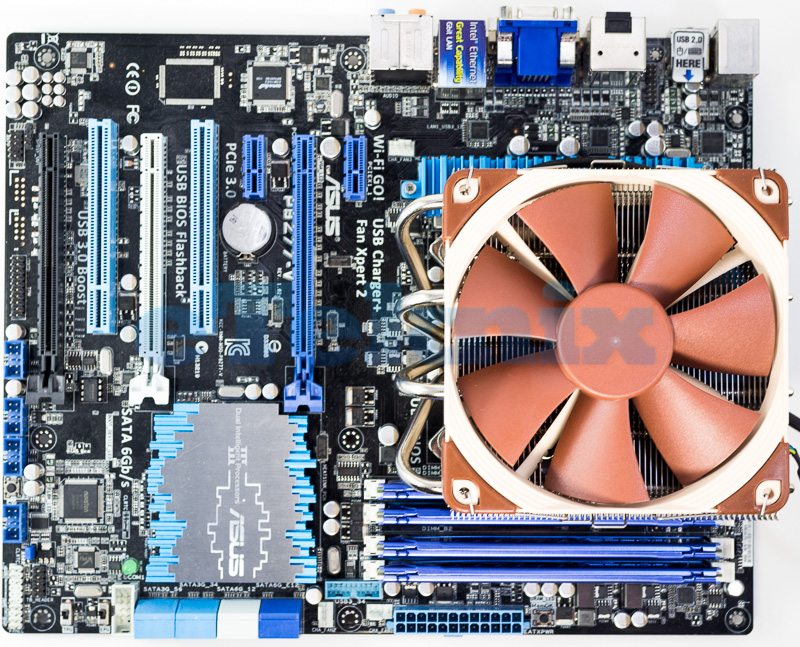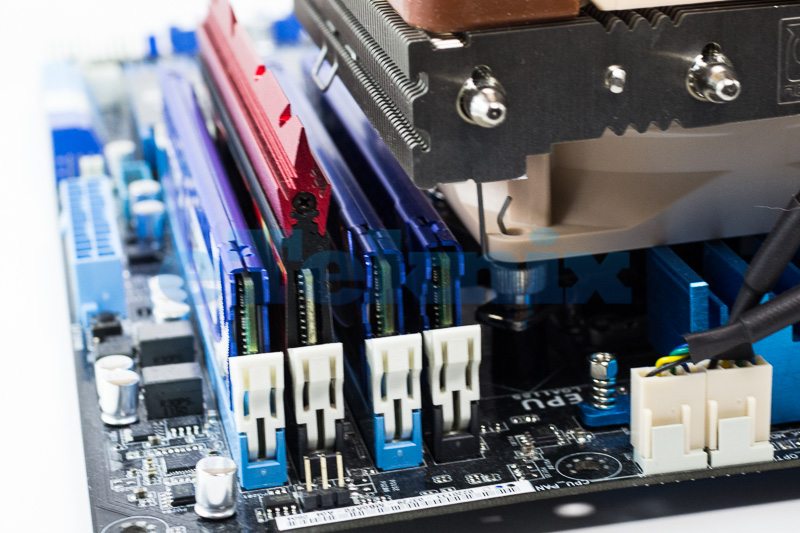Noctua NH-L12 L-Type Low Profile CPU Cooler Review
Ryan Martin / 12 years ago
The Noctua NH-L12 had a relatively complex installation as far as CPU coolers go. You first had to fit some screws to the backplate and affix that to the underside of the motherboard. Then add some spacers over the screws poking through the motherboard mounting holes. This is followed by placing the correct brackets on the spacers and then screwing the brackets down with the supplied screws. With the backplate and brackets secured you then have to remove the NF-F12 fan from the L12 cooler, use the provided holes and screws in the heatsink to secure it into place and then reattach the fan if you want.
There isn’t really anything “useful” I can tell you that the manual doesn’t already point out. Sometimes in this section of the review I like to give some tips, tricks or criticisms about the installation procedure or supplied manual but the Noctua manual covers EVERYTHING. If you read the manual you cannot go wrong with the procedure, there are a lot of steps but nothing is fiddly, tricky or requires more than 2 hands to do – so top marks to Noctua for keeping things easy, even if it isn’t necessarily simple.
I also thought it was nice that Noctua included a tube of their NT-H1 thermal grease and three manuals for all the different socket variations instead of trying to cram it all into one book. You can tell Noctua have really thought about their products and it is something refreshing to see as we often see CPU cooler manufacturers making the same basic mistakes time and time again – like giving ambiguous installation instructions and not telling which way round to put the backplate because that does actually matter on most motherboards.
From the top, although this is a slightly angled picture, you can see that the cooler covers the majority of the CPU socket area and encroaches over DIMM slots #1 and #2.

Here you can see normal sized RAM modules will fit fine, but higher profile ones struggle to fit.

Due to the fact there is a 92mm fan used at the bottom, there aren’t any motherboard compatibility issues so this should be good for most motherboards. Although, ITX motherboard users will need to be more careful in their planning as the more compact things get the less room there is for error.




















